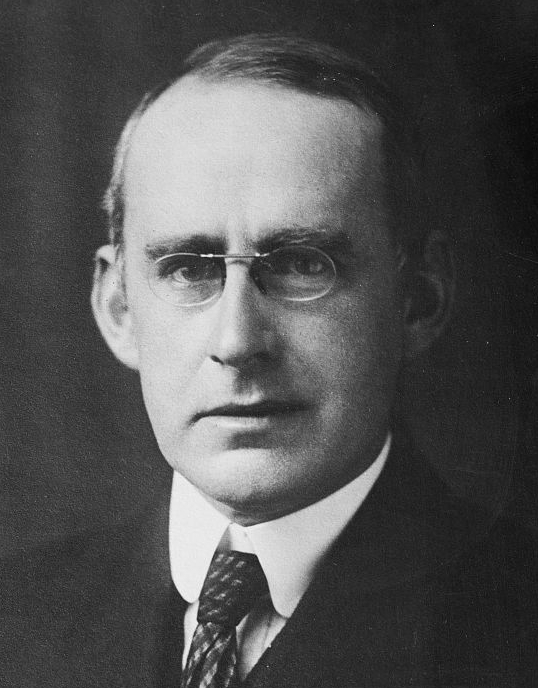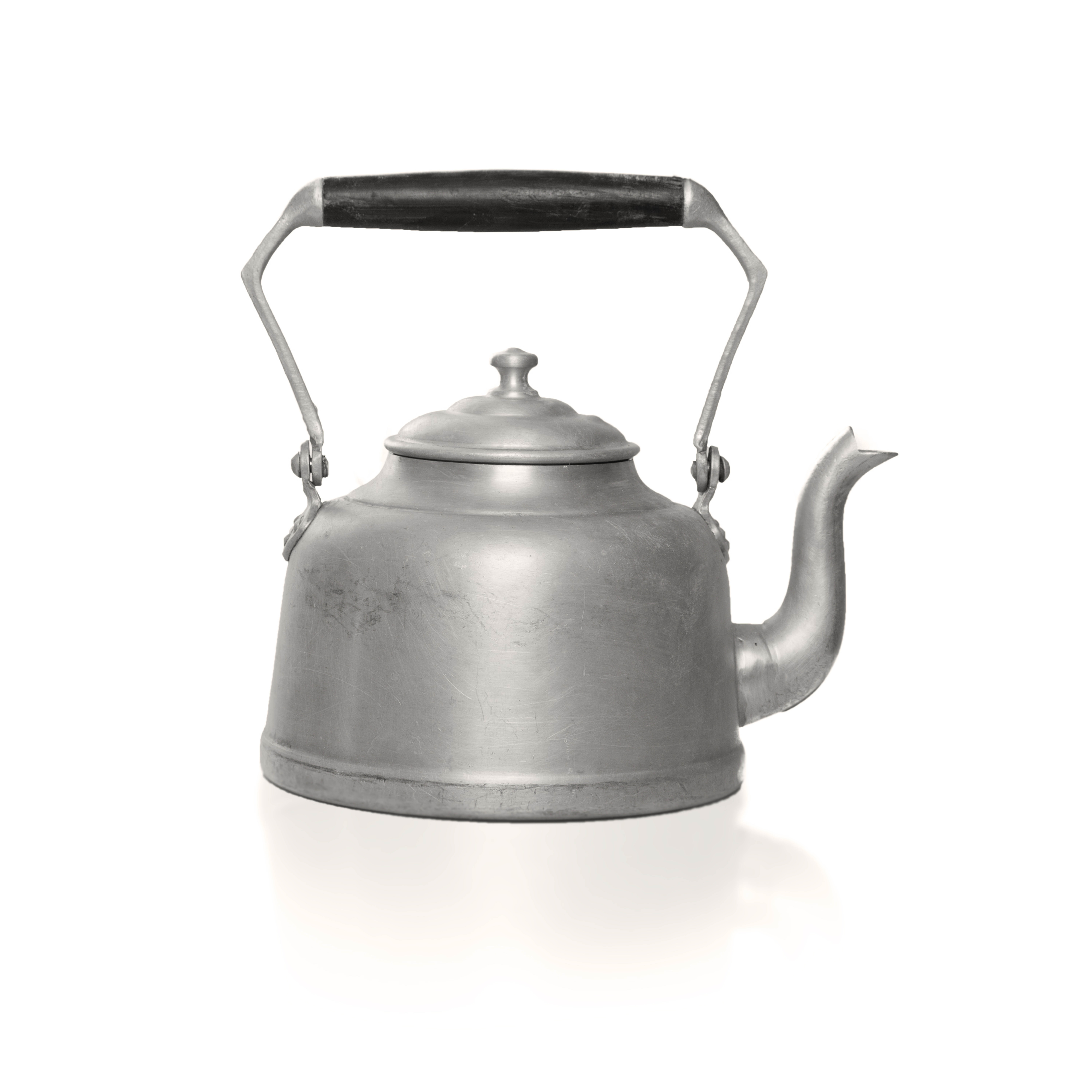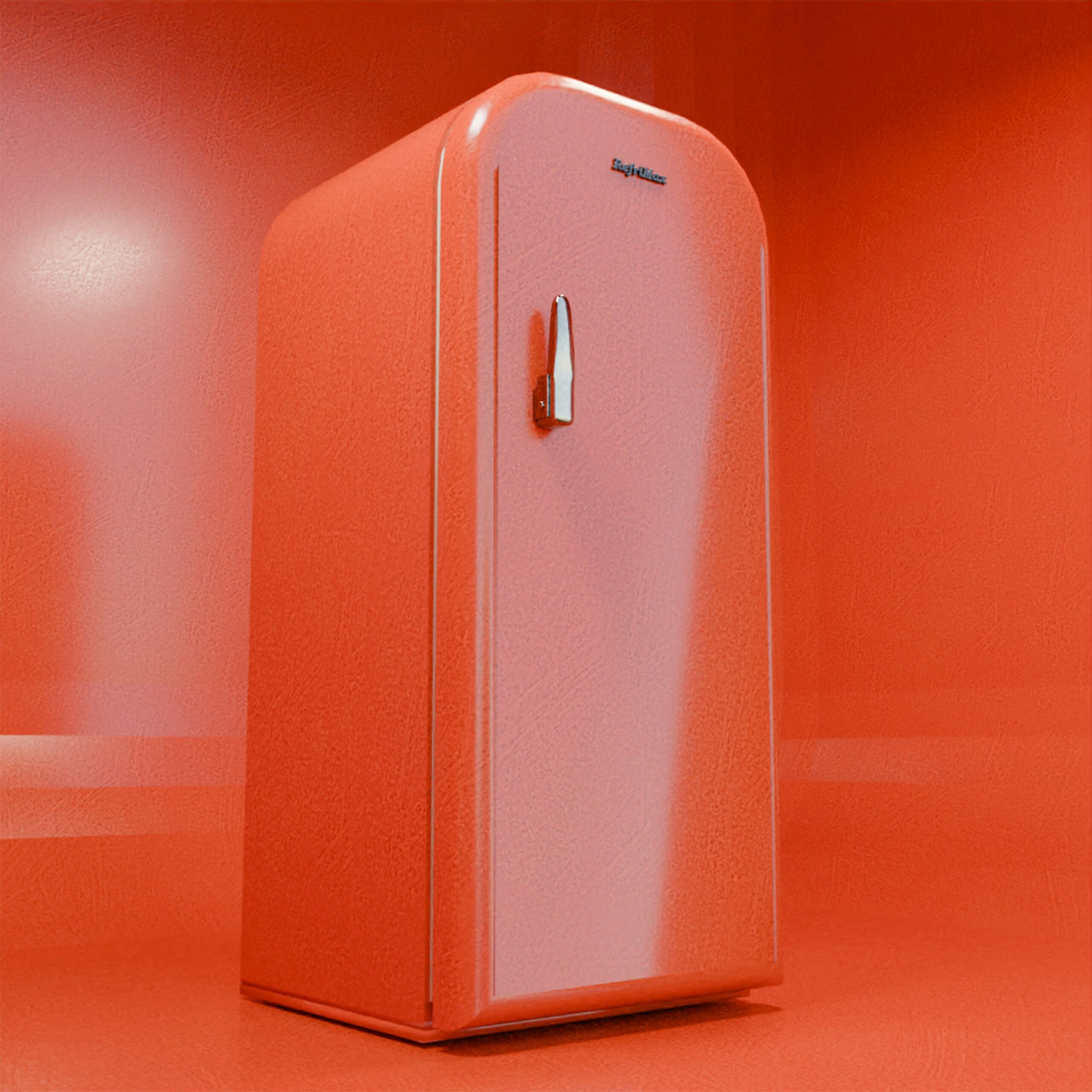Why does hot air rise?

We’ve all heard the saying “hot air rises”. Daniel Bonatti, M.AIRAH, explains why this phenomenon occurs, how our understanding has evolved over time, and what it means for practical applications in building design.
When air is heated, it expands and becomes less dense than the cooler air around it. This decrease in density causes the hot air to rise; the cooler, denser air exerts a greater downward force, effectively pushing the hot air upwards.
This explanation might seem simple, but it’s the result of centuries of scientific theory, experimentation and debate. We now know that the phenomenon of hot air rising is a fascinating example of heat convection, a process governed by the second law of thermodynamics.
In this article, we’ll look at this scientific law, how it has evolved over time, and what phenomenon means for those working in HVAC&R and building services.


Understanding the jargon
Before we take a closer look at the phenomenon, we need to understand some key terms relating to thermodynamics.
Conduction is heat transfer directly between neighbouring atoms or molecules. This type of heat transfer typically occurs through a solid.
Convection is heat transfer via the movement of a fluid, such as air or water.
Radiation is the emission of electromagnetic radiation. While it occurs through a medium, it does not require one.
A reversible process occurs if the system passes from the initial to the final state through a succession of equilibrium states. A process can be reversible only if it occurs quasi-statically.
An irreversible process is one in which the system and its surroundings cannot be returned to their initial state.
Entropy is a disorder and heat transfer effect. The thermodynamic arrow of time (entropy) is the measurement of disorder within a system. Denoted as ΔS, the change in entropy suggests that time itself is asymmetric with respect to order of an isolated system, meaning that a system will become more disordered as time increases.
Sensible heat is temperature change as a result of heat flow.
Latent heat is a change of state. An example of this is sun radiating on a building, causing conduction and convection with heat loads on the building.
Second law of thermodynamics
Some scientific laws have a single, widely agreed-upon definition. The second law of thermodynamics certainly isn’t one of those.


As British astrophysicist Sir Arthur Stanley Eddington once famously said:
“There have been nearly as many formulations of the second law as there have been discussions of it.”
Sir Arthur Stanley Eddington
So, instead of trying to condense the law into a single punchy definition, scientists make statements about how the law works and what it means. The following are some of those statements:
- No heat engine operating in a cycle can absorb thermal energy from a reservoir and perform an equal amount of work.
- A perpetual motion machine of the second kind – one that could operate continuously at 100% efficiency – is impossible to construct.
- It is impossible to construct a cyclic machine whose sole effect is to transfer heat continuously from one body to another body at a higher temperature.
Think of it like this: the second law of thermodynamics establishes which thermodynamic processes in nature do or do not occur. It shows that heat flows from warmer objects to cooler ones, while the opposite does not occur.
This is an irreversible process that occurs naturally in only one direction. We can also see that the one-way nature of thermodynamics processes in fact establishes a direction of time.
As such, the law states that the entropy of the entire universe, as an isolated system, will always increase over time. The second law also states that the changes in the entropy of the universe can never be negative.
The mathematical expression for entropy change (ΔS) when a quantity of heat (Q) is added or removed from a system at a temperature (T) is:
Hot (high temperature) flows to cold (low temperature)
ΔS > 0 natural
ΔS = TQ
Q = ΔS/T
Founders of the law
Still with us? You can see why the phenomenon of hot air rising is actually much more complicated than it might seem from our initial statement.
We can thank the founding theorists of the second law for doing the heavy lifting and allowing us to even get to this point. Each of these people have contributed unique perspectives to our understanding of thermodynamics:
- Sadi Carnot: In 1824, Carnot published his seminal work – Reflections on the Motive Power of Fire – in which he introduced the concept of the Carnot cycle. This served as the foundation for the second law. Carnot originally described the law using the concept of “caloric” (heat), realising that some caloric is always lost in a cycle.
- Rudolf Clausius: In 1850, he introduced the Clausius statement on entropy, which asserts that heat cannot flow spontaneously from a colder material to a hotter material.
- Lord Kelvin (William Thompson): Also in 1850, he formulated the Kelvin statement, emphasising the impossibility of completely converting heat into work in a cyclic process and highlighting the inevitability of energy loss.
- Constantin Carathéodory: In 1909, he introduced the principle of Carathéodory, stating that in the vicinity of any initial state, there exist states that cannot be approached arbitrarily closely through adiabatic (no heat exchange) processes.
An extended history
While the direct foundations of law itself can be traced back 200 years, our knowledge of how heat works has actually been evolving over millennia. Consider how the following individuals have collectively shaped our understanding of thermodynamics, heat transfer, and buoyancy:
- Archimedes (c. 287–212 BC): Archimedes’ principle represents the discovery of buoyancy. It states that a body immersed in a fluid experiences an upward force equal to the weight of the displaced fluid.
- Robert Boyle (1662): Boyle’s law explains the inverse relationship between gas pressure and volume. Although not directly tied to buoyancy, it offers insights into gas behaviour.
- Edmond Halley (1686): Halley studied meteorology and described warm air rising, complementing Newton’s research on heat and buoyancy.
- Sir Isaac Newton (1701): Newton developed the law of cooling and experimented with heat transfer and buoyancy, demonstrating that heated air rises.
- Jacques Charles (1787): He formulated Charles’s law, which shows that gas volume increases proportionally with temperature (at constant pressure), explaining why hot air rises.
- Joseph Louis Gay-Lussac (1802): He published Charles’s law and further explored the thermal expansion of gases, solids, and liquids.
- Sadi Carnot (1824): Introduced the Carnot cycle – a theoretical heat engine model – and established foundational ideas for the second law of thermodynamics.
- Emile Clapeyron (1834): Clapeyron expanded on Carnot’s work and developed the Clausius-Clapeyron relation, describing phase transitions.
- Rudolf Clausius (1850): Clausius defined the second law of thermodynamics, introducing entropy as a measure of heat transfer and irreversibility.
- Lord Kelvin (William Thomson) (1850): Kelvin formalised entropy concepts and heat transfer mechanisms, including conduction, convection, and radiation.
- Josiah Willard Gibbs (1876): He introduced the concept of “Gibbs free energy” (also known as Gibbs function or free enthalpy), a thermodynamic quantity used to determine the maximum work a system can perform at constant temperature and pressure. The formula for this is: G = H – TS and G = U + PV – TS.
- Constantin Carathéodory (1909): He proposed the principle of Carathéodory, emphasising adiabatic changes and the inaccessibility of certain states.
- Eduard Grüneisen (1912): He studied thermal expansion and developed the Grüneisen parameter thermal expansion coefficient.
- Max Planck (1926): Planck advanced the understanding of thermodynamics, focusing on heat, irreversibility, and energy transfer in closed systems.
Everyday applications
We’ve done the hard work to wrap our heads around the theory behind thermodynamics. Now it’s time for the fun part: looking at some practical applications of these principles in the real world.
Kettles
In a kettle, convection works by heating water at the bottom of the kettle. As the water gets hot, it becomes less dense and rises to the top, displacing the cooler water. This creates a circular flow of water as hotter water rises and cooler water sinks, leading to even heating of the entire volume of water in the kettle.


Fridges
The working principle employed by refrigerators is similar to that of air conditioners. The freezer, in case of refrigerators, is typically placed at the top. The warm air, being less dense, rises and is cooled down by the freezer. Now this cool air, being denser, sinks and keeps the lower part of the fridge cool.


Storms
Watching a storm (hopefully from a warm and comfortable place) is a great way to observe thermodynamics in action. Clouds form when water in the ocean warms and rises into the atmosphere. These warm water droplets eventually cool and condense into smaller droplets or ice crystals, which then clump together and become visible as clouds.
In a thunderstorm, the small clouds formed by this process quickly collide with each other to develop into much bigger clouds, commonly known as cumulonimbus or storm clouds. When these droplets get too big and heavy to be held aloft by updrafts, gravity causes them to plummet, resulting in heavy rainfall.
Hot air balloons
One of the most visible applications of Charles’s law is in hot air balloons: the air inside the balloon is heated, making it less dense than the surrounding cooler air, creating a buoyant force that lifts the balloon. Conversely, cooling the air inside the balloon makes it denser, causing the balloon to descend.
In 1783, two French brothers – Joseph-Michel and Jacques-Étienne Montgolfier – turned this concept into a workable model when they risked their own lives for the first manned hot air balloon flight. They both lived to tell the tale, and we’re still talking about their success to this day!


Applications in the built environment
Here are some innovative applications that are relevant to those working in the built environment.
Trombe wall
Around 1967, professor and architect Félix Trombe designed a special kind of wall for passively heated and cooled solar structures. These are called Trombe walls, but you might also have heard them described as mass walls, solar walls, or thermal storage walls.
Trombe walls:
- have a large mass
- are dark in colour
- face the equator
- are covered with glass on the outside, with an air gap between the wall and the glazing to provide insulation.
This passive solar building design strategy adopts the concept of indirect gain. When sunlight strikes the glazing, the heat transfers through the air to the wall, slowly heating it throughout the day. At night, as the air around the wall cools, the thermal energy stored in the wall releases into the room, heating the living space.
Paris Olympic village
The athletes’ village at the 2024 Olympic Games was designed to be cooled with a system of pipes that pump cold water underneath the buildings, with no traditional air conditioning to reduce the event’s carbon emissions. Once the water passes through the cooling system, it all returns into the nearby river. In performing its heat exchange function, the returning water is at a slightly higher temperature than the ambient river water temperature. The heat exchange system allows multiple buildings’ air conditioning and refrigeration plant to transfer heat to and from the river. These passive natural sources were designed to keep athletes cool even during a heatwave.
Macquarie bank Darling Harbour Shelly Street, Kings Street Wharf
The designers of this innovative building used chilled-beam technology, in which a closed system of water cooled by the harbour circulates throughout the building. This lowers the temperature and creates a natural convection current that circulates the air. Innovations like these halved the building’s energy consumption.
University of Sydney law building
The new law school building at the University of Sydney employs a double-skin curtain wall cavity façade system with operable louvres. This system creates a stack effect and regulates the interior thermally. In addition, natural air circulation is controlled through the interior, tempering the environment as it is needed. This ventilation serves as natural air conditioning, allowing for the control of heat and comfort while minimising energy use.
Heat from solar radiation is reduced due to the break between glass walls; the interior wall functions as a thermal wall, protecting the occupants. The louvres automatically operate depending on the movement of the sun, but this movement can be overridden by the occupants. This allows for better filtration of daylight throughout the building.
Western Sydney University Liverpool vertical campus
The façade of this building uses a horizontal grid to separate floors, as well as a double-skin façade. This design not only provides easier access for maintenance, but the grid allows the air to flow up between the gap provided by the double skin façade.
In practice, this natural ventilation strategy acts like a chimney and is an example of the stack effect. The hot air rises, creating a natural circulation of air that is fully dependent on pressure differentials and doesn’t rely on any mechanical systems.
A solid foundation
As you can see, our understanding of the basic thermodynamic principles on which critical technology like HVAC&R works has evolved over millennia, and will continue to do so in the future. Understanding these principles and designing with them – rather than against them – is perhaps the simplest way we can reduce energy use and improve performance in the built environment.
About the author
Daniel Bonatti, M.AIRAH, has been a member of the Institute since 2004 and was recently recognised with his 20-year membership certificate. He graduated from the University of Sydney with a Master of Design Science Building Services in 2005. Daniel has been a building inspector since 2016, upgrading with a Master of Building Surveying from Western Sydney University in 2024. In 2023, he won the Engineering Technologist of the Year award from Engineers Australia.
References
Archimedes (c. 287 – c. 212 BC). On Floating Bodies. Unpublished manuscript.
Boyle, R. (1662). New Experiments Physico-Mechanical, Touching the Spring of the Air and its Effects. London: H. Hall..
Carnot, Sadi, 1890. Reflections on the Motive Power of Heat. Thurston, Robert Henry (editor and translator). New York: J. Wiley & Sons.
Carnot, N.L.S. (1824). Réflexions sur la puissance motrice du feu et sur les machines propres à développer cette puissance (Reflections on the Motive Power of Fire and on Machines Fitted to Develop that Power). Paris: Bachelier.
Charles, J. (1787). Sur les propriétés des gaz (On the Properties of Gases). Unpublished manuscript.
Clapeyron, E. (1834). Mémoire sur la puissance motrice de la chaleur (Memoir on the Motive Power of Heat). Journal de l’École Royale Polytechnique, 14, pp. 153-190.
Clausius, R. (1850). On the Moving Force of Heat and the Laws of Heat which may be Deduced Therefrom). Annalen der Physik, 155(3), pp. 368-397.
Eddington, A, S, 1927. The Nature of the Physical World (1927).
Gay-Lussac, J.L. (1802). Recherches sur la dilatation des gaz et des vapeurs Annales de Chimie et de Physique, 43, pp. 137-175.
Gillispie C, C,, Lazare Carnot S(lf}ant, 1971 Princeton University Press,
Princeton, NJ.
Grüneisen, E. (1912). Theorie des festen Zustandes einatomiger Elemente (Theory of the Solid State of Monoatomic Elements). Annalen der Physik, 344(12), pp. 257-306.
Kevin 2024. Lord William Thomson Kevin, retrieved from https://darwinthenandnow.com/scientific-revolution/william-thompson-kevin/
Kestin, ED, J, 1976. The Second Law of Thermodynamics, Dowden, Hutchinson and Ross Inc.,
Montgolfier, J.-M. & Montgolfier, J.-É. (1783). Description d’une machine aérostatique (Description of an Aerostatic Machine). Paris: Académie Royale des Sciences.
Newton, I. (1701). Scala graduum Caloris (A Scale of the Degrees of Heat). Philosophical Transactions of the Royal Society, 22, pp. 824-829
Planck, M. (1926). Treatise on Thermodynamics. Dover Publications. Science Notes, 2024.Charles Law, retrieved from https://sciencenotes.org/charless-law-definition-formula-examples/
Studious Guy, 2024. Charles Law, retrieved from https://studiousguy.com/examples-charles-law-daily-life/
Srinivasan, J., 2001. Sadi Carnot and the second law of thermodynamics. Resonance, 6(11), pp.42-48.
Thomson, W. (1850). On the Dynamical Theory of Heat, with Numerical Results Deduced from Mr. Joule’s Equivalent of a Thermal Unit, and M. Regnault’s Observations on Steam. Transactions of the Royal Society of Edinburgh, 20, pp. 261-288.

This article appears in Ecolibrium’s Winter 2025 edition
View the archive of previous editions
Latest edition
See everything from the latest edition of Ecolibrium, AIRAH’s official journal.






